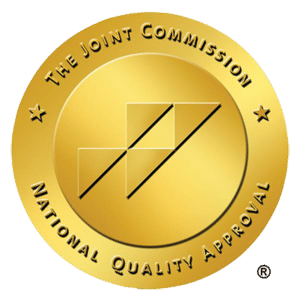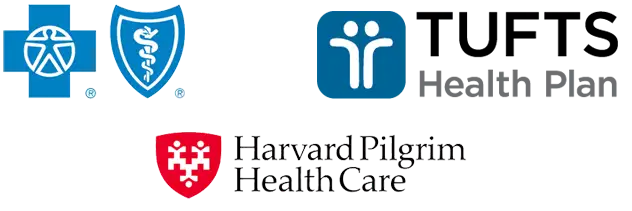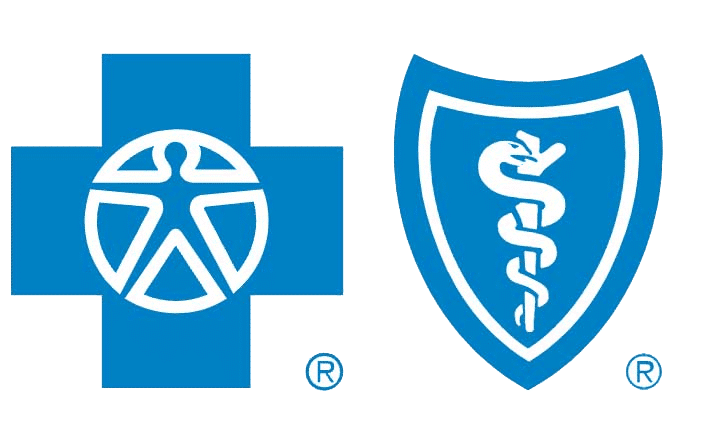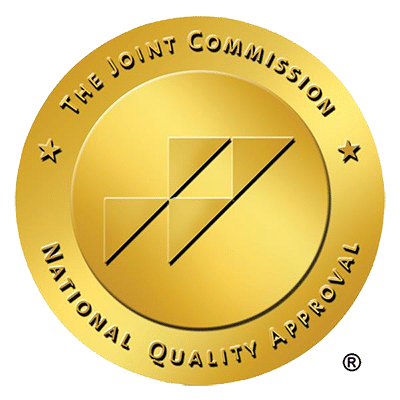Spotting the signs of crack addiction early can be lifesaving. Rapid weight loss, behavioral shifts, and psychological disturbances are warning signals. This guide directly addresses the essential signs you need to watch for, helping to accelerate the journey from concern to action.
Key Takeaways
- Crack cocaine is an intensely addictive, rapid-acting substance characterized by its crystalline rock appearance; its use leads to notable behavioral changes such as increased energy, erratic behavior, and strong urges for more consumption.
- Physical and psychological symptoms of crack cocaine addiction are profound, including significant weight loss, organ damage, mood swings, depression, paranoia, and cognitive impairment, with potential long-term health consequences.
- Effective treatment for crack cocaine addiction involves a combination of medical supervision during detox, tailored therapy programs, and ongoing support to address the complex cycle of abuse and to mitigate the risk of relapse.
Identifying Crack Cocaine Use: Hallmarks of Addiction
Crack cocaine is a potent and highly addictive form of cocaine. Distinct from powdered cocaine, its rapid-acting, freebase form delivers an intense high almost immediately upon smoking. This immediate rush of euphoria, linked to the drug’s ability to inhibit dopamine reuptake in the brain, significantly contributes to its addictive potential.
Appearance of Crack Cocaine
Understanding how to identify crack cocaine is vital in the fight against its use and addiction. Crack rocks are:
- Small
- Jagged
- Off-white rocks
- It can look like pieces of hard candy
They are a form of crack cocaine, a highly addictive and dangerous drug. They exhibit a crystalline appearance and are not densely packed.
The purity of crack cocaine can be tested by its reaction to flame or water; pure crack will melt.
Behavioral Indicators of Crack Use
Certain behavioral changes often signify the use of crack cocaine. The drug incites increased energy due to its stimulation of the central nervous system. Users may exhibit erratic, unpredictable, and potentially aggressive behaviors. Furthermore, strong urges for further consumption, especially when the initial high dissipates, can be a major sign of its use.
Physical Symptoms of Crack Cocaine Addiction
The physical impact of crack cocaine addiction can be strikingly evident. Indicators may include:
- significant weight loss
- a gaunt or malnourished look
- sallow or aged skin
- dilated pupils
Long-term abuse can damage major organs like the liver, kidneys, and heart, and compromise the immune system.
Telltale Signs on the Body
Physical signs that may indicate crack addiction include burn marks on fingers or lips, which are common signs of crack use. These burns often occur due to the heat from the crack pipe during repeated use.
Changes in Health Status
Crack cocaine use can have grave health consequences. Inhaling crack smoke can irritate the lungs, causing persistent coughing and increasing the risk of developing bronchitis over time. Both of these conditions can seriously affect respiratory health. More seriously, recurrent use can lead to interstitial fibrosis due to repeated alveolar hemorrhage and inflammation. In extreme cases, severe pulmonary complications like noncardiogenic pulmonary edema, thermal injury, pneumothorax, and pulmonary infarction can occur.
Additionally, crack cocaine use notably impacts the cardiovascular system. Smoking crack strains the heart, increases the risk of heart attacks, constricts blood vessels in the brain, and raises the potential for stroke. These potential complications underscore the importance of recognizing and treating crack cocaine addiction.
Want to Learn More about Crack Addiction?
Our addiction recovery team is here 24/7 to answer your questions or to get you help.
Psychological Impacts of Crack Cocaine Use
Crack cocaine use, a form of cocaine use disorder, also yields profound psychological consequences akin to its physical effects. Crack use can lead to:
- violent and unpredictable mood swings
- severe depression
- suicidal thoughts
- paranoia
- hallucinations
It’s often associated with comorbid psychiatric disorders that can escalate with continued use.
Cognitive impairment can ensue from prolonged chronic usage over time, affecting both mental and physical processes.
Mood and Behavior Alterations
The intense paranoia induced by crack cocaine use can manifest in 68% to 84% of users and is associated with violent behavior in up to 55% of those with cocaine-induced psychiatric symptoms. Emotional imbalance is a common issue, with individuals having difficulty understanding and managing their emotions, which can impair decision-making during the drug’s influence.
Furthermore, individuals suffering from drug addiction may experience the following symptoms:
- Depression
- Persistent anxiety
- Agitation
- Cravings
- Sleep disturbances
- Lack of motivation
- Emotional outbursts
These symptoms can complicate their interpersonal relationships and daily functioning, making normal conversations difficult and causing them to appear preoccupied with securing their next fix.
Cognitive Decline and Impairment
Consistent use of crack cocaine can result in the reduction of critical neurotransmitters such as dopamine, norepinephrine, and serotonin, which are essential for cognitive functioning. This depletion can result in cognitive difficulties, especially in executive functions such as decision-making, planning, and judgment.
Long-term use may dull cognitive processes, impair memory retention, and increase brain sensitivity to stress, leading to dangerous behaviors and health complications.
The Cycle of Crack Cocaine Abuse
Crack cocaine use is characterized by a cycle of intense highs and severe lows. Its potent formula induces a significant dopamine release in the brain, leading to an intense high characterized by feelings of euphoria, power, and energy. However, this high is notoriously short-lived, typically lasting only about 15 minutes.
The High and the Low
The fleeting euphoria from crack cocaine use is often followed by an extreme low. As the effects of the drug wear off and the dopamine rush fades, users often experience:
- irritability
- potential anger
- aggressiveness
- even psychotic symptoms.
This alternating cycle of highs and lows forms a potent, addictive pattern that can be difficult to disrupt.
Risky Behaviors and Consequences
The cycle of crack cocaine use can spur crack cocaine users to engage in risky behaviors related to drug use. When under the influence of crack, individuals may:
- Disregard the law
- Make impulsive decisions that impact their family and private life
- Experience aggression, poor judgment, and paranoia, escalating risk-taking behaviors
Furthermore, the maladaptive decision-making cycle in crack abuse prioritizes immediate rewards and overlooks future consequences. Users may participate in illicit or dangerous activities, such as theft, violence, or risky sexual behaviors. Over time, repeated crack use can deplete neurotransmitters leading to cognitive decline and reinforcing compulsive drug-seeking behavior. Substance abuse research has shown the detrimental effects of crack use and crack abuse on individuals and communities.

Warning Signs of Escalating Crack Addiction
Identifying an escalating crack cocaine addiction is fundamental to intervening and initiating the recovery process. An increasing frequency of crack cocaine use can lead to tolerance, requiring higher doses to achieve the same effect, signifying a transition from casual use to severe addiction.
In regions where crack cocaine is readily available, the likelihood of frequent use and escalating addiction is typically higher.
Recognizing Increased Tolerance
Increased tolerance can be a significant indicator of escalating crack cocaine addiction. The intense effects of crack cocaine can rapidly lead to the development of tolerance. As tolerance builds, individuals may find themselves using crack cocaine more frequently, potentially every 15-20 minutes, increasing the risk of a cocaine overdose.
Such increased frequency often results in the consumption of larger crack amounts to attain the desired effects.
Spotting Signs of Dependence
Dependence on crack cocaine can manifest in various symptoms, including extreme fatigue, unusual sleep patterns, and intense cravings. Withdrawal symptoms typically initiate from 30 minutes to 72 hours following the last dose of crack cocaine and physical symptoms generally persist from 1 to 3 months.
Identifying these signs serves as a crucial first move towards seeking professional assistance.
Support and Treatment Options at Topsail
At Topsail Addiction Treatment, we offer a variety of top treatment and therapy options for crack addiction.
Our approach is anchored on personalization, tailoring treatment plans to the unique needs of each individual struggling with crack addiction. If you are looking for help with crack cocaine detox in MA the please contact us.
Tailored Recovery Programs
We offer a Full Day Program (Partial Hospitalization Program), a Half Day Program (Intensive Outpatient Program), and an Outpatient Program. Each program is designed to provide personalized support, considering factors such as the length of time the individual has used crack cocaine, the quantity consumed, any other drugs involved, and their overall health status.
Amenities and Expert Care
Our facilities, located in the serene environment of North Andover, Massachusetts, provide a peaceful setting for recovery. We boast top-notch amenities designed to enhance comfort and promote well-being as clients navigate their recovery journey.
Our experienced professionals ensure personalized and expert care for each individual’s unique recovery needs.
Navigating Crack Cocaine Withdrawal and Detox
The journey to recovery from crack cocaine addiction begins with detoxification and withdrawal. This process involves safely removing the drug from the system, often requiring medical supervision and potentially medication to manage withdrawal symptoms.
Successfully navigating through this phase is a vital initial step towards recovery.
Understanding the Detox Process
Acute withdrawal symptoms from crack cocaine can manifest as anxiety, exhaustion, unpleasant dreams, difficulty concentrating, irritability, and mood changes. Detox can involve medications such as Clonidine for blood pressure and anxiety, Gabapentin for seizures and insomnia, Propranolol for anxiety, and Trazodone for sleep.
Given the complex nature and possible severity of withdrawal symptoms, close medical supervision is crucial during the detox process for safety assurance and effective symptom management.
Preparing for Post-Detox Recovery
Following the initial detox phase, individuals may feel a misleading sense of recovery. However, the risk of relapse remains high due to outside world stressors, making continuous medical supervision and support critical.
Following detox, it’s imperative to continue with personalized treatment programs that incorporate diverse therapeutic techniques to maintain recovery progress and prevent relapse.
Summary
Crack cocaine addiction is a formidable enemy. Yet, with the right support, treatment, and commitment, recovery is possible. At Topsail Addiction Treatment, our mission is to provide comprehensive, personalized care to those battling this addiction. With our tailored programs, serene environment, and dedicated professionals, we stand ready to help individuals take back control of their lives and embark on a journey towards lasting recovery.
Frequently Asked Questions
What is crack cocaine?
Crack cocaine is a potent and highly addictive form of cocaine that delivers an intense high almost immediately upon smoking. It’s a highly dangerous and illegal drug.
What are the physical signs of crack cocaine addiction?
Physical signs of crack cocaine addiction can include significant weight loss, a gaunt or malnourished look, sallow or aged skin, and dilated pupils. These signs may indicate a serious problem that requires attention.
What are the psychological impacts of crack cocaine use?
The psychological impacts of crack cocaine use can include violent mood swings, severe depression, paranoia, and cognitive function impairment. It can also lead to suicidal thoughts and hallucinations, which can have serious long-term effects on the user’s mental health.
What treatment options does Topsail offer for crack cocaine addiction?
Topsail offers a range of treatment options for crack cocaine addiction, such as medication management therapy, psychotherapy, yoga, and motivational interviewing, in addition to Full Day, Half Day, and Outpatient Programs.
What is the detox process like for crack cocaine addiction?
The detox process for crack cocaine addiction involves safely removing the drug from the system, often under medical supervision. Medication may be used to manage withdrawal symptoms such as anxiety, exhaustion, unpleasant dreams, difficulty concentrating, irritability, and mood changes.
Related Posts

Your Comprehensive Guide on How to Stop Fentanyl Addiction
Wondering how to stop fentanyl addiction? You’re not alone. Fentanyl is a highly addictive opioid, and breaking free requires clear, actionable steps and resilient support.

The Stages of Crack Addiction: Understanding the Progression
Are you trying to understand the stages of crack addiction? This article outlines the progression from initial experimentation to the devastating impact of full-blown addiction.

Managing Crack Addiction Withdrawal: Symptoms & Timelines
What does crack addiction withdrawal really look like and how can you manage it? When confronting withdrawal, it’s crucial to grasp the intensity of symptoms,

How to Treat Marijuana Addiction Effectively: Beat The Habit
Seeking how to treat marijuana addiction? This straightforward guide outlines step-by-step methods to break free from marijuana’s grip. Simplifying the science, we address the core

A Step-by-Step Guide on How to Overcome Crack Addiction
Navigating the turbulent waters of crack addiction recovery may seem daunting, but you’re not alone. In learning how to overcome crack addiction, knowing what to

Critical Signs of Meth Addiction: Symptoms & Support Options
Wondering what are the warning signs of meth addiction? Early detection can be lifesaving. From drastic behavioral swings to ‘meth mouth,’ these symptoms are alarming














